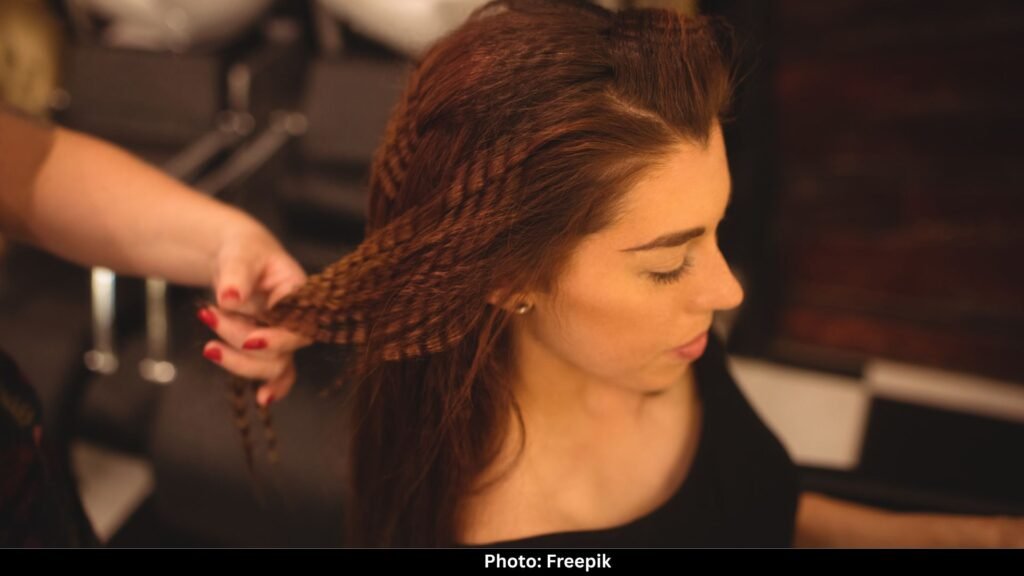If you think braids are just a childhood memory or a festival trend, it is time to look again. Braids are having a renaissance. From red carpets to runways, what used to be considered simple plaits have transformed into intricate, creative designs. But here is the thing: the renewed love for braids is not just about aesthetics. It is about function.
Cold weather is notoriously unkind to hair. Dry air saps out moisture, wind tangles strands, and static leaves you looking like you walked through an electric storm. Braids, when done right, are more than a fashion statement. They act as a protective style, locking in hydration and reducing exposure to winter’s worst elements.
Braids as a Shield: Your Hair’s Winter Coat
Think of your braids as a cozy coat wrapped around your hair. They do not just sit there looking stylish. They work. By weaving your strands together, you are essentially tucking away fragile ends that would otherwise be left vulnerable to the cold. The result is less breakage, fewer split ends, and a fighting chance at retaining length.
Dr. Sarah Thompson, a trichologist who has studied protective styles, once explained it like this: when your hair is braided, the outer layer of each strand is not rubbing against scarves, sweaters, or harsh winds. Instead, it is cushioned within the braid itself. That single factor alone can make the difference between hair that thrives in winter and hair that feels like straw by spring.
Moisture Retention: The Real Game-Changer
Here is where it gets interesting. Moisture loss is the number one culprit behind winter hair problems. The moment humidity drops, your strands start to dehydrate. What braids do is lock in whatever hydration you feed your hair beforehand. Oils, leave-in conditioners, and serums stay sealed in for longer.
For anyone who has struggled with thinning hair, this is a big deal. Some people regain strength and density by focusing on nutrition and scalp care, but braids help maintain that progress by minimizing water loss. Instead of constantly fighting dryness, your hair gets a chance to stabilize.
If you have ever noticed your hair feeling softer and more manageable after a week of braids, that is not in your head. That is biology.
Braids and Growth: Why Length Retention Matters
There is a common misconception that braids magically make your hair grow faster. That is not quite true. Hair grows from your scalp at its own biological pace. But what braids do is help you keep the length you are already producing.
Every time you comb, heat-style, or over-manipulate your hair, you risk losing length through breakage. With braids, you cut down on those daily stressors. That is why people often notice they gain inches while in braids. The growth is not new, it is preserved.
One enthusiast swore her hair grew 1.5 inches in a month while she was using natural oils and wearing braids. The oils may have fueled scalp health, but the braids protected that fragile new growth from breaking off. It is not magic. It is simply reducing friction and manipulation.
Guarding Against Winter’s Wrath
If you live somewhere with harsh winters, you know the toll it takes. Icy winds whip at your strands, hats flatten your style, and dry indoor heating adds insult to injury. The result is frizz, static, and hair that feels brittle.
Braids are like armor. They block wind damage, minimize friction from wool and cotton fabrics, and keep static at bay. Stylists have noted that clients who wear protective styles like braids through the cold season often return in spring with healthier hair compared to those who left their hair loose.
There is even a thermal angle. Braids can help maintain the integrity of hair that has already been protected from heat damage. Once you have invested in repairing or hydrating your strands, braids keep that work intact instead of letting winter undo your progress.
The Low-Maintenance Dream
Here is the part no one talks about enough: braids are a time-saver. Once your hair is braided, you do not have to wake up every morning and fight with your strands. The style holds, day after day.
This does not just save time. It reduces wear and tear. Every time you brush or heat-style, you are putting your hair through stress. By braiding, you drastically cut down the daily manipulation. Less manipulation equals stronger strands over time.
Think of braids as the capsule wardrobe of hairstyles: versatile, chic, and endlessly adaptable. You can dress them up, dress them down, or leave them alone. No endless touch-ups. No constant anxiety about frizz. Just style it once and let it work for you.
Braids for Volume and Confidence
If you have fine or thinning hair, braids can feel like a revelation. They create the illusion of thickness, adding body without the need for extensions or chemical treatments. By weaving hair together, you give it structure, and that structure can make it look fuller than it actually is.
Some stylists even recommend a strategic cut followed by braiding to double the appearance of volume. Add to that the fact that braids control frizz naturally, and you have got a solution that looks good and feels good without heavy product buildup.
The 30-Day Challenge: One Month, One Transformation
Want proof? Try a 30-day braid challenge. Commit to wearing braided hairstyles for an entire month. Cleanse and hydrate your scalp as usual, but keep your strands protected in braids the rest of the time.
People who have tried this often report noticeable changes. Shine improves. Ends stay intact. Hair feels stronger and easier to manage once the braids come out. One woman described it as the month her hair finally had a break.
When you let your hair rest in a protective style, you are giving it the time and conditions it needs to recover. That is why results often feel dramatic. Your hair is not suddenly healthier, it is finally being left alone to thrive.
The Artistry Factor: Style Meets Health
Let us not forget the fun part. Braids are not only about protection. They are an art form. From box braids to French braids to fishtails, the range of styles is almost endless. Each culture brings its own twist, each stylist adds their own flair.
This mix of creativity and function is what makes braids timeless. You can walk into a boardroom or a weekend party and look equally polished. And while you are turning heads, your hair is quietly reaping the benefits.
A Tradition That Still Works
Braiding is not new. Cultures around the world have relied on braids for centuries, not just as decoration but as practical protection. What is fascinating is how those traditions still hold up under the scrutiny of modern hair science.
We now know that braids reduce environmental stress, retain moisture, and protect fragile ends. All things ancient cultures understood intuitively. In other words, science is catching up to what tradition has always taught: braids work.
The Takeaway: Healthy Hair Is Happy Hair
Here is what it all boils down to. Winter is tough on hair. Dryness, breakage, and static can undo months of effort. Braids offer a way out. They protect, preserve, and enhance your strands while giving you freedom from constant styling.
Yes, they are stylish. Yes, they are versatile. But the real gift of braids is how they nurture your hair beneath the surface. Think of them not just as a look, but as a strategy, a way to shield your locks while expressing your style.
So if you are ready to give your hair a break and maybe even see it grow stronger than before, consider joining the braid revolution. One month could change the way your hair feels all winter long.
Read More: Can Reheated Food Make You Sick? What You Need to Know




